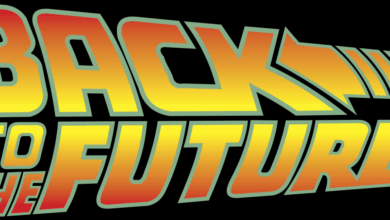The Death and Rebirth of the Movie Industry
The death and rebirth of the movie industry is a fascinating story of adaptation and resilience. From the silent films of the early 20th century to the streaming services of today, the industry has undergone a dramatic transformation. This journey explores the technological leaps, societal shifts, and financial forces that have shaped the industry, from its historical context to its future prospects.
It’s a story of innovation, disruption, and the enduring power of storytelling.
We’ll delve into the impact of digital technologies, examining how streaming platforms and AI are changing the way movies are made, distributed, and consumed. We’ll also look at the evolution of moviegoing experiences, from the grandeur of the cinema to the comfort of home. Furthermore, we’ll analyze the financial landscape, exploring the changing economics of production, distribution, and exhibition, and how the future of film is intertwined with both artistic vision and financial viability.
Historical Context of the Movie Industry

The movie industry, a global phenomenon, has undergone a remarkable transformation from its nascent stage to the sophisticated entertainment powerhouse it is today. Its journey is interwoven with technological breakthroughs, societal shifts, and cultural influences. This exploration delves into the key historical milestones, highlighting the evolution of filmmaking across various regions and the enduring impact of these changes.The evolution of the movie industry mirrors the broader societal advancements of the 20th and 21st centuries.
From the initial silent films to the complex digital productions of today, each era’s technological innovations and cultural shifts have profoundly shaped the narrative, production, and consumption of movies. Understanding this historical context provides crucial insight into the present and future of the industry.
Timeline of Significant Events
The early development of filmmaking was marked by rapid progress. The first public screenings of projected moving images in the late 19th century paved the way for the emergence of a distinct industry. Key milestones include the invention of the motion picture camera, the development of early film formats, and the establishment of the first film studios. The period from the early 1900s to the 1920s saw the rise of silent films, followed by the introduction of sound in the 1920s, transforming the storytelling capabilities of cinema.
The 1930s saw the golden age of Hollywood, with the emergence of major studios and stars. World War II significantly impacted film production, and the post-war era brought about new artistic styles and international filmmaking.
The movie industry’s death and rebirth is a fascinating cycle, mirroring the ever-evolving nature of entertainment. Just like the silver screen has seen its ups and downs, new technologies are constantly reshaping how we consume and create content. Concerns surrounding the reliability of US internet voting technology, as highlighted in this article ( us internet voting technology comes under fire ), also spark questions about trust and security in digital systems, ultimately impacting the future of how we interact with information and each other.
This raises questions about the reliability of the entire entertainment industry, highlighting the constant evolution and adaptation needed to stay relevant and trusted.
Technological Advancements
Technological innovations have consistently driven the movie industry’s progress. The transition from celluloid film to digital formats, the advent of CGI and special effects, and the evolution of camera technology have revolutionized movie production. Early advancements like the development of synchronized sound, color film, and wide-screen formats significantly impacted the cinematic experience. The digital age has enabled greater creative freedom and accessibility, from post-production editing to distribution channels.
Geographical Variations
The evolution of the movie industry has differed across geographical regions. Hollywood’s dominance in the early to mid-20th century gave way to the emergence of significant film industries in Europe, Asia, and other parts of the world. Different cultural contexts and artistic styles shaped the narratives and production methods in these regions. The rise of Bollywood, for example, demonstrated a unique approach to storytelling, blending traditional elements with contemporary techniques.
The influence of global markets and cross-cultural collaborations continues to shape the industry today.
Rise and Fall of Movie Genres
| Genre | Early Period (Pre-1950s) | Mid-Century (1950s-1980s) | Modern Era (1990s-Present) |
|---|---|---|---|
| Westerns | Highly popular, often depicting frontier life and heroism. | Decreased in popularity, but still present in some productions. | Occasional resurgence, often with contemporary themes. |
| Musical | Significant presence, combining music and storytelling. | Experienced a decline in popularity. | Revival in some forms, often blending with other genres. |
| Horror | Initially focused on supernatural elements. | Continued popularity with various subgenres. | Continues to be a popular genre, often with innovative themes. |
The table above demonstrates the shifting popularity of different movie genres over time. The factors influencing these changes include evolving societal tastes, technological advancements, and the emergence of new artistic styles.
The movie industry’s been through a few dramatic shifts, from the rise of streaming to the decline of physical media. It’s a constant cycle of death and rebirth, and interestingly, developments like RealNetworks teaming with Intel on music services realnetworks teams with intel on music service mirror this. The way we consume entertainment is always evolving, reflecting a similar pattern in the movie industry’s evolution.
Societal Changes and Trends
Societal changes have significantly impacted the movie industry. From the influence of social movements to changing demographics, the industry has had to adapt to new perspectives and narratives. For instance, the rise of independent films and diverse representation in cinema reflects a shift towards greater inclusivity and storytelling that resonates with wider audiences.
The Impact of Technological Disruption

The movie industry, once a realm of physical film reels and theatrical releases, has undergone a seismic shift thanks to digital technologies. Streaming platforms, online distribution channels, and artificial intelligence have fundamentally altered the landscape, impacting everything from production to consumption. This transformation presents both exciting opportunities and daunting challenges for everyone involved.The digital revolution has shattered traditional movie distribution models, creating new possibilities for filmmakers and viewers alike.
This has also led to a complex interplay of advantages and disadvantages, demanding a critical analysis of the current state and future prospects of the industry.
Reshaping the Distribution Landscape with Streaming Services
Streaming services have become a dominant force in the movie industry, offering unprecedented access to films. This widespread availability, however, has come with its own set of trade-offs.
- Pros of Streaming Services: These platforms offer a vast library of films, potentially reaching a global audience previously inaccessible. They allow for lower entry barriers for filmmakers by enabling direct-to-consumer distribution. Furthermore, they provide valuable data on viewer preferences, enabling targeted marketing and content customization. This can be seen in the rise of personalized recommendations algorithms on various streaming services.
- Cons of Streaming Services: The industry faces challenges in balancing revenue streams, as subscription models can sometimes cannibalize traditional box office revenue. This dynamic can also lead to a decline in theatrical viewership, potentially impacting the cinematic experience. The prevalence of piracy remains a significant concern, and the economic impact on independent filmmakers is still being assessed. Additionally, concerns regarding the potential homogenization of content and the impact on the artistic diversity of films are important issues to consider.
The Emergence of AI in Filmmaking
Artificial intelligence is rapidly changing how films are created and consumed. From pre-production to post-production and distribution, AI is proving its value.
- AI in Production: AI tools can assist in tasks such as scriptwriting, character development, and even generating visual effects. For instance, AI can analyze scripts to identify potential plot holes or improve character arcs, streamlining the pre-production process.
- AI in Distribution: AI-powered recommendation systems are used to suggest films to viewers, potentially enhancing discovery and engagement. These systems can analyze viewer data to predict preferences and curate personalized content recommendations. This is already being utilized by major streaming services to drive viewership.
Emerging Business Models
The digital revolution has fostered the emergence of innovative business models. These new approaches often blend traditional methods with digital technologies.
- Direct-to-Consumer Models: Streaming services and online platforms are increasingly popular direct-to-consumer channels. This allows filmmakers to bypass traditional distribution models and reach audiences directly. This is exemplified by successful independent film projects released directly on streaming platforms.
- Interactive Storytelling: Technological advancements have enabled new interactive storytelling experiences. These involve viewer engagement, allowing for more immersive and personalized film viewing. Some experimental films have successfully integrated interactive elements, enabling viewers to influence the narrative.
Challenges and Opportunities for Independent Filmmakers
Independent filmmakers face unique challenges in the digital age, but also find new opportunities.
- Challenges: Independent filmmakers often lack the resources and distribution networks of major studios. This can create obstacles in competing for attention in the digital landscape. Funding and marketing challenges remain a significant barrier to entry. The need for adaptation and agility in response to rapid technological advancements is paramount.
- Opportunities: Streaming platforms provide new avenues for independent filmmakers to reach audiences directly. Digital tools offer cost-effective production methods. Online communities provide networking and collaboration opportunities. The ability to create niche content tailored to specific audiences is an important advantage.
The Transformation of Movie Consumption: The Death And Rebirth Of The Movie Industry
The movie industry has undergone a profound transformation, moving from a predominantly theatrical experience to a more diverse and accessible model encompassing streaming services and home viewing. This shift has been driven by technological advancements, changing audience preferences, and evolving business strategies. The very nature of how we consume movies has been irrevocably altered, impacting everything from the way films are marketed to the overall cinematic experience.This evolution has not only reshaped the movie industry’s structure but has also fundamentally altered the relationship between filmmakers, distributors, and audiences.
The transition to a more personalized and on-demand viewing experience has presented both opportunities and challenges, necessitating adaptation and innovation.
Shift in Viewing Locations
The traditional movie-going experience, centered around the theatrical release, has faced significant competition from home viewing options. The rise of streaming services has created a new paradigm, offering audiences unprecedented access to a vast library of films at their convenience. This accessibility has altered the way movies are experienced, with audiences now having the freedom to choose between the communal theater environment and the intimacy of their own homes.
The movie industry’s constant evolution, its death and rebirth, mirrors the ever-changing digital landscape. Just like the rise and fall of film formats, new technologies are reshaping the very foundations of storytelling. Think about how the shift to digital production, akin to adopting open-source solutions like those explored in beyond propaganda deploying linux on the desktop , forces creative teams to adapt and innovate.
This fundamental shift, in turn, breathes new life into cinematic storytelling, showcasing a powerful cycle of adaptation and renewal within the industry.
Comparing Theatrical and Streaming Experiences
| Feature | Theatrical Experience | Streaming Experience |
|---|---|---|
| Setting | Public venue (theater), shared experience | Private space (home), individual experience |
| Accessibility | Requires advance purchase and scheduling | Immediate access, anytime availability |
| Social Interaction | Communal experience, shared reactions | Limited social interaction, potential for asynchronous discussions |
| Cost | Ticket price, potential concessions | Subscription fees, potential for rentals or purchases |
| Convenience | Requires travel, limited availability | High convenience, accessible from anywhere |
| Immersion | Large screen, high-quality audio | Variable quality based on home setup, potential for distractions |
Impact of Screen Sizes
The size and quality of the viewing screen significantly affect the cinematic experience. Larger screens in theaters create a more immersive environment, drawing the audience into the film’s world with a greater sense of scale and presence. Home viewing, however, offers flexibility in screen size, but the experience can be compromised by the limitations of the home environment, such as smaller screens or poor audio quality.
The quality of the viewing experience is greatly impacted by the screen size and the resolution, which can significantly alter the way a movie is perceived.
Social Media’s Role in Movie Promotion and Discussion
Social media platforms have become indispensable tools for promoting and discussing movies. Trailers, posters, and behind-the-scenes content are shared widely, generating buzz and anticipation before a film’s release. Social media allows audiences to engage in conversations, share opinions, and create communities around specific movies, influencing both critical reception and box office success. These platforms also play a role in shaping the overall perception and discussion surrounding a film.
Evolving Distribution Strategies
Movie distribution strategies have evolved significantly to meet the demands of modern audiences. Simultaneous theatrical and streaming releases, for example, allow filmmakers to reach a wider audience while maximizing revenue streams. These strategies have become more complex, catering to different audience segments and preferences, and incorporating diverse platforms to enhance visibility and engagement. By diversifying the distribution channels, filmmakers can expand their reach and cater to diverse viewing habits.
The Financial Landscape and the Future of Film
The movie industry, a once-dominant entertainment force, is navigating a complex financial landscape. The last decade has witnessed a fascinating interplay of factors – from the rise of streaming platforms to evolving audience preferences – dramatically reshaping the economics of film production, distribution, and exhibition. This evolution demands a careful examination of current trends and future possibilities.The economics of filmmaking are in a constant state of flux.
The traditional studio model, reliant on box office revenue, is being challenged by new distribution models, forcing studios to adapt and innovate to remain profitable. This necessitates a profound understanding of the financial strategies employed by successful studios and the impact of changing consumption habits.
Movie Industry Financial Performance Overview
The last decade saw a mixed bag of financial performance in the movie industry. While some blockbuster films generated enormous returns, the overall revenue picture has been influenced by the rise of streaming services, which compete with traditional theatrical releases for audience attention and dollars. This shift has complicated the traditional revenue streams and has forced a reevaluation of financial strategies for studios.
Changing Economics of Production, Distribution, and Exhibition
The traditional three-part structure of film production, distribution, and exhibition is undergoing significant transformation. Production costs, influenced by talent fees and special effects, continue to rise, while the ability to recoup these costs from box office returns has become less predictable. Streaming platforms offer new avenues for distribution, offering significant potential, but also introducing complexities in terms of licensing fees and revenue sharing.
Exhibition, while still a crucial component, faces competition from home viewing, forcing cinemas to adapt by improving the experience and finding new revenue models, such as premium formats and related services.
Financial Strategies of Successful Studios
Successful studios are adopting multifaceted financial strategies to adapt to this evolving landscape. These include:
- Strategic Partnerships: Collaborations with streaming platforms, for example, allow studios to reach wider audiences and generate revenue from multiple sources.
- Diversification of Revenue Streams: Expanding into merchandise, television adaptations, and interactive experiences are proving to be valuable additions to traditional revenue streams.
- Focus on High-Quality Content: Investing in compelling stories and talented filmmakers remains crucial for attracting both theatrical and streaming audiences, and fostering positive word-of-mouth marketing.
- Efficient Cost Management: Studios are implementing strategies to control production costs, including pre-production planning, cost-effective filming locations, and optimized post-production workflows.
Impact of Box Office Revenue on the Future of Movie Production
The role of box office revenue is evolving. While it still plays a crucial part in a film’s financial success, its dominance is diminishing. The rise of streaming and the demand for diversified revenue streams are changing the equation. Studios are adjusting their strategies to incorporate alternative revenue models and are understanding the changing importance of box office performance.
The success of a film now depends less on its box office success and more on its overall financial performance across all platforms.
Investment Landscape for New Film Ventures
Investing in new film ventures requires a careful analysis of market trends and audience preferences. The traditional model of investing in a film based solely on box office potential is being replaced by a more nuanced approach. Investors are looking at factors like potential for streaming revenue, merchandise sales, and the film’s overall appeal across various platforms. A successful investment strategy in the future of film requires a deep understanding of this complex financial interplay.
Creative Expression and Artistic Evolution
The evolution of film is intrinsically linked to the creative spirit of filmmakers. From the early days of silent cinema, the art form has absorbed and adapted various artistic movements, shaping storytelling and visual language in profound ways. Directors and actors have been instrumental in pushing boundaries and refining techniques, while the very nature of narrative has been continuously reimagined.
This exploration delves into the multifaceted influence of artistic styles and movements on moviemaking, highlighting the role of key figures and the constant evolution of storytelling approaches.The cinematic landscape is a vibrant tapestry woven from threads of diverse artistic influences. Each period, from the expressionist flourishes of the silent era to the experimental narratives of modern auteurs, has left an indelible mark on the way films are conceived, produced, and experienced.
The evolution of filmmaking is not simply a technical advancement, but a profound artistic journey reflecting societal shifts and cultural movements.
Influence of Artistic Styles and Movements
Filmmaking has been profoundly influenced by a multitude of artistic styles and movements. Impressionism, with its emphasis on capturing fleeting moments and subjective experiences, found a natural expression in the evocative cinematography of early French cinema. Similarly, expressionism, characterized by distorted perspectives and symbolic imagery, left an undeniable imprint on German cinema, evident in films like “Nosferatu.” These movements not only shaped visual aesthetics but also impacted narrative structures, often reflecting the anxieties and aspirations of the time.
Role of Directors and Actors
Directors and actors play a pivotal role in shaping the cinematic experience. Directors are the architects of visual language, using composition, lighting, and camera angles to create mood and convey meaning. Their interpretations of scripts and visions dictate the film’s overall tone and style. The contributions of actors are equally crucial, bringing characters to life with their performances, often transforming a written script into a compelling and emotional narrative.
Iconic directors like Alfred Hitchcock and actors like Marlon Brando, through their distinct approaches, have fundamentally altered the way films are made and perceived.
Evolution of Storytelling Techniques
The narrative structure of films has undergone significant transformations. Early films relied heavily on visual storytelling, with minimal dialogue and plot points often presented in a straightforward manner. Over time, filmmakers began to experiment with more complex narratives, employing flashbacks, parallel storylines, and nonlinear structures. The development of techniques like montage, which condensed time and emotion into short sequences, revolutionized storytelling, allowing filmmakers to convey complex ideas and emotions with greater efficiency.
Comparison of Film Narrative Approaches
Different approaches to film narrative reflect diverse artistic philosophies and cultural contexts. Some films prioritize character development, focusing on the inner lives of individuals and their emotional journeys. Others emphasize plot-driven narratives, emphasizing action, suspense, and conflict. Still others explore abstract concepts and themes, using symbolism and allegory to convey deeper meanings. These varying approaches often intersect and overlap, enriching the cinematic experience and fostering a dynamic exchange of storytelling techniques.
Evolution of Visual Storytelling in Movies
| Era | Visual Style | Key Techniques | Examples |
|---|---|---|---|
| Early Cinema (1890s-1910s) | Simple, documentary-style | Static shots, basic editing | The Arrival of a Train at La Ciotat |
| Silent Era (1910s-1920s) | Emergence of artistic expression | Mise-en-scène, close-ups, symbolism | The Cabinet of Dr. Caligari, Battleship Potemkin |
| Golden Age of Hollywood (1930s-1950s) | Technical mastery, narrative clarity | Masterful cinematography, elaborate sets, iconic characters | Casablanca, Citizen Kane |
| New Hollywood (1960s-1970s) | Experimental, auteur-driven | Unconventional camera angles, non-linear storytelling | The Godfather, Taxi Driver |
| Contemporary Cinema (1980s-Present) | Globalized, diverse | Digital effects, complex narratives, global themes | Parasite, Everything Everywhere All at Once |
This table illustrates the progression of visual storytelling in film, highlighting the evolution of techniques and styles across different eras. Each era built upon the previous, demonstrating a continuous evolution of cinematic language.
The Impact of the Pandemic and Future Resilience
The COVID-19 pandemic irrevocably reshaped the movie industry, forcing a rapid adaptation to unprecedented challenges. From theater closures to the rise of streaming services, the industry grappled with a dramatic shift in consumer behavior and financial models. This period presented both immense difficulties and unexpected opportunities, ultimately laying the groundwork for a potentially more resilient and innovative future.
Pandemic’s Impact on the Movie Industry
The pandemic significantly disrupted the movie industry’s traditional operating model. Theater closures globally led to the postponement and rescheduling of numerous releases, causing substantial financial losses for studios and distributors. Production was halted, leading to delays and disruptions in the pipeline of upcoming films. The sudden shift to remote work for many in the industry presented new logistical and technical hurdles.
Adaptation Strategies
In response to the pandemic’s impact, the movie industry employed various strategies to navigate the crisis. Many studios transitioned to streaming platforms, offering films directly to consumers. This allowed for a continued presence in the market, even while theaters remained closed. Simultaneous releases on both streaming and theatrical platforms became increasingly common, attempting to capture audiences in both spaces.
Increased reliance on digital tools and remote production processes also became necessary.
Lessons Learned
The pandemic underscored the importance of diversification and adaptability. The industry learned the value of having multiple revenue streams, and the significance of being prepared for unforeseen circumstances. The success of streaming releases highlighted the growing demand for on-demand content. Furthermore, the experience emphasized the need for greater flexibility and innovation in production and distribution models.
Future Resilience and Recovery Strategies
Moving forward, the movie industry’s future resilience hinges on several key factors. Continued investment in streaming infrastructure and content creation will be crucial. A blend of theatrical and streaming releases, catering to diverse audience preferences, seems likely. Strengthening partnerships with streaming services and developing new distribution models will also be important. Focus on creating high-quality content, irrespective of release platform, is essential.
Impact on Different Sectors, The death and rebirth of the movie industry
| Sector | Impact |
|---|---|
| Film Production | Production delays, budget constraints, reliance on digital tools, and remote work |
| Theatrical Distribution | Theater closures, reduced box office revenue, and a shift to alternative release strategies |
| Streaming Services | Increased demand, accelerated growth, and increased competition |
| Marketing and Promotion | Adaptation to digital marketing strategies, virtual events, and influencer campaigns |
| Employment | Temporary job losses in theaters, shifts in workforce demographics, and greater use of remote labor |
Final Review
In conclusion, the movie industry’s journey is a testament to its adaptability and the enduring appeal of storytelling. While challenges abound, the industry’s ability to embrace new technologies and evolving audience preferences is remarkable. The death and rebirth narrative suggests a future where innovation and artistic expression continue to drive the industry forward, creating new experiences and captivating audiences in unprecedented ways.







